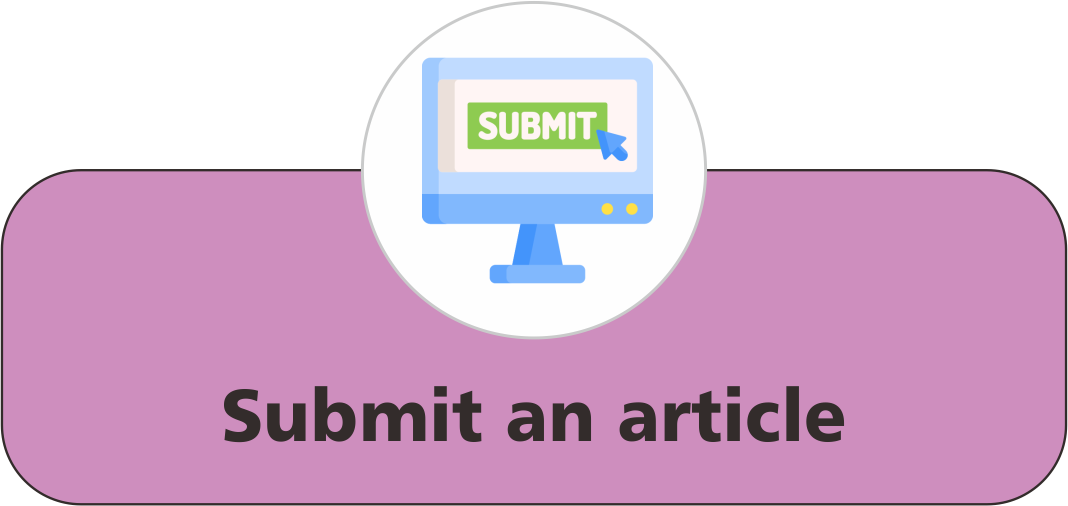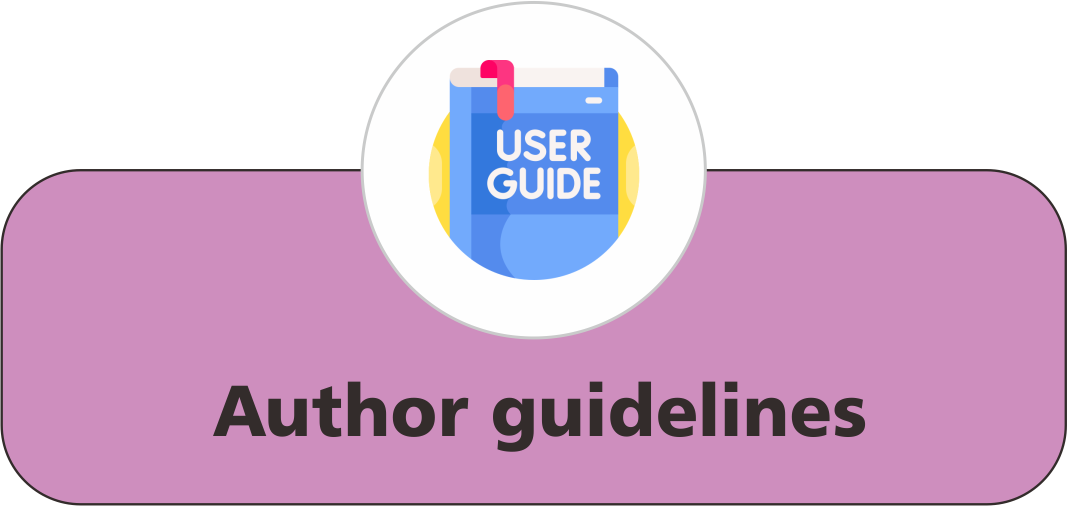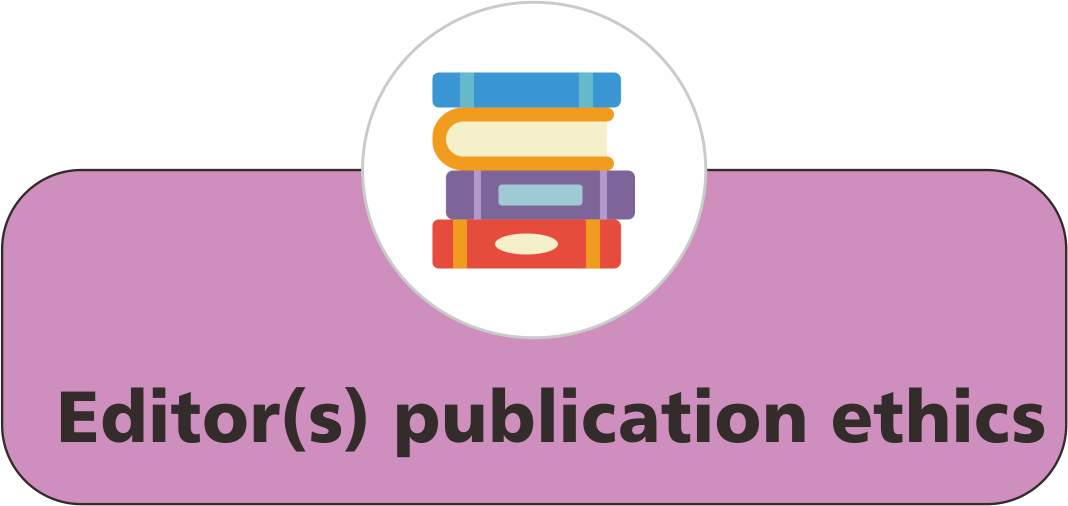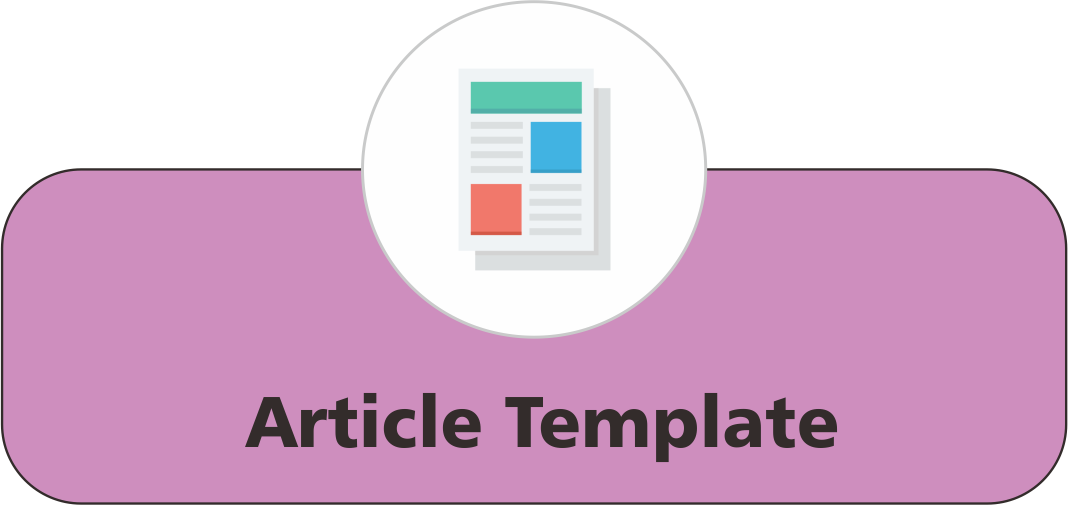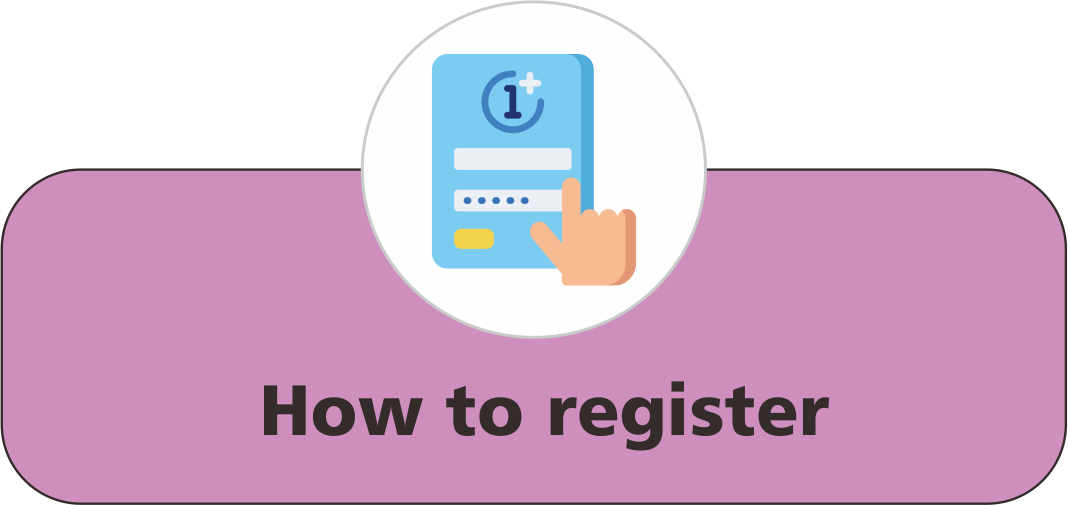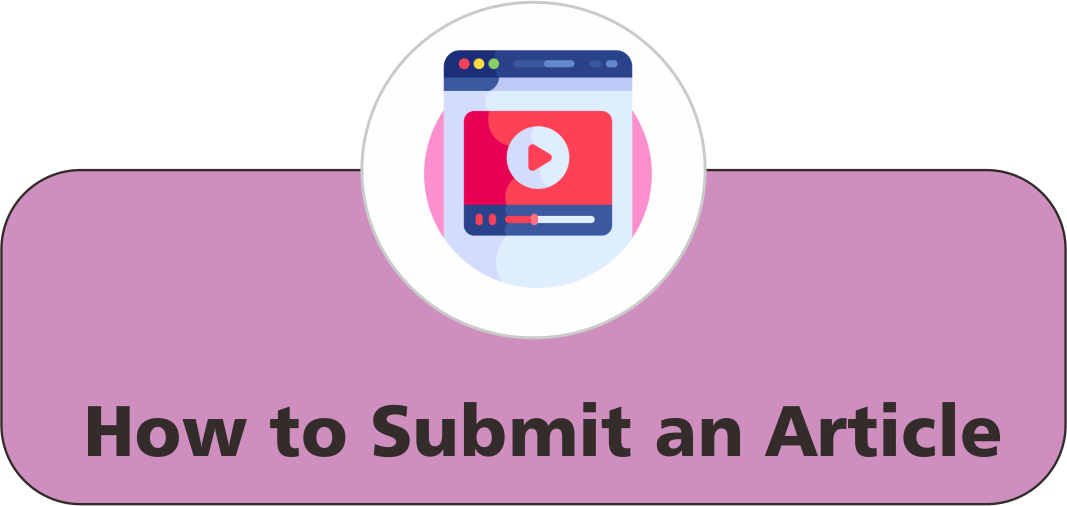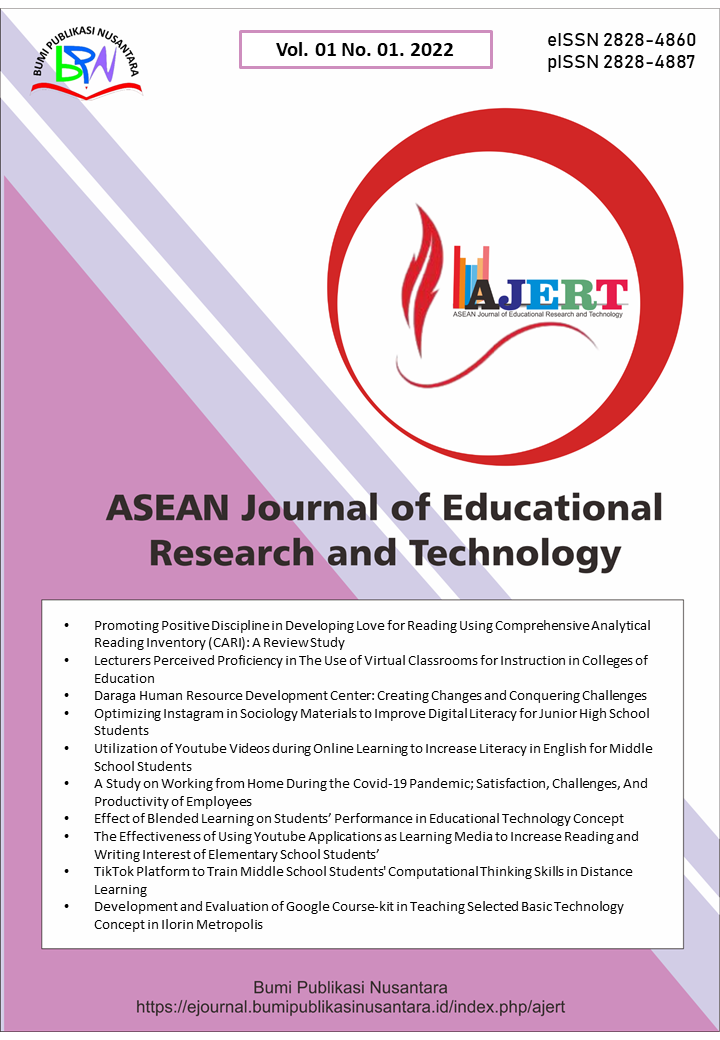Development and Acceptability of Virtual Laboratory in Learning Systematics
 ), Jason M. Bautista(2), Janine L. Javier(3), Renee Juselle B. Delmonte(4), Rizalyn B. Cudera(5),
), Jason M. Bautista(2), Janine L. Javier(3), Renee Juselle B. Delmonte(4), Rizalyn B. Cudera(5),
(1) Sultan Kudarat State University
(2) Sultan Kudarat State University
(3) Sultan Kudarat State University
(4) Sultan Kudarat State University
(5) Sultan Kudarat State University
 Corresponding Author
Corresponding Author
Abstract
Keywords
References
Achuthan, K., Francis, S. P., and Diwakar, S. (2017). Augmented reflective learning and knowledge retention perceived among students in classrooms involving virtual laboratories. Education and Information Technologies, 22(6), 2825-2855.
Ahmad, A. (2010). The effect of using a virtual lab on the physics concepts achievement, acquisition of higher-order thinking skills and motivation toward science learning among students of the third preparatory class. Scientific Journal of Education, 13(6), 1-46.
Al Balushi, A., Al-Musawi, A., Ambusaidi, A. and Al Hajri, F. (2016). The effectiveness of interacting with scientific animations in chemistry using mobile devices on grade 12 students' spatial ability and scientific reasoning skills. Journal of Science Education Technology, 26, 70-81.
Ali, W. (2020). Online and remote learning in higher education institutes: A necessity in light of covid-19 pandemic. Higher Education Studies, 10(3), 16-25.
Aschbacher, P., Li, E., and Roth, E. (2010). Is science me? high school students’ identities, participation, and aspirations in science, engineering, and medicine. Journal of Research in Science Teaching, 47(5), 565–582.
Barth, M., and Burandt, S. (2013). Adding the “e-” to learning for sustainable development: Challenges and innovation. Sustainability, 5, 2609–2622.
Bhardwaj, A. (2016). Importance of education in human life: A holistic approach. International Journal of Science and Consciousness, 2(2), 23–28.
Brickhouse, N. W. (2001). Embodying science: A feminist perspective on learning. Journal of Research in Science Teaching, 38(3), 282–295.
Campos, N., Nogal, M., Caliz, C., and Juan, A. A. (2020). Simulation-based education involving online and on-campus models in different European universities. International Journal of Educational Technology in Higher Education, 17, 1–15.
Carlone, H., and Johnson, A. (2007). Understanding the science experiences of successful women of color: Science identity as an analytic lens. Journal of Research in Science Teaching, 44(8), 1187–1218.
Dhawan, S. (2020). Online learning: A Panacea in the time of covid-19 crisis. Journal of Educational Technology Systems, 49(1), 5-22.
Gamage, K. A. A., Wijesuriya, D. I., Ekanayake, S. Y., Rennie, A. E. W., Lambert, C. G., and Gunawardhana, N. (2020). Online delivery of teaching and laboratory practices: Continuity of university programmes during covid-19 pandemic. Education Sciences., 10(10), 1-9.
Hassan, H. Martinez-Rubio, J. M. Perles, A. Capella, J. V. Dominguez, C., and Albaladejo, J. (2012). Smartphone-based industrial informatics projects and laboratories. IEEE Transactions on Industrial Informatics, 9(1), 557–566.
Paredes-Labra, J., Siri, I.M., and Oliveira, A. (2018). Preparing public pedagogies with ict: The case of pesticides and popular education in brazil. Sustainability, 10(10), 3377.
Potkonjak, V., Gardner, M., Callaghan, V., Mattila, P., Guetl, C., Petrović, V. M., and Jovanović, K. (2016). Virtual laboratories for education in science, technology, and engineering: A review. Computers and Education, 95, 309-327.
Redha, H. (2010). Effective use of virtual lab for enquiry and demonstration in teaching chemistry on the development of scientific thinking. Journal of Science Education, 13(6), 61-106.
Sarabando, C., Cravino, J. P., and Soares, A. A. (2014). Contribution of a computer simulation to students’ learning of the physics concepts of weight and mass. Procedia Technology, 13, 112–121.
Son, J. Y. (2016). Comparing physical, virtual, and hybrid flipped labs for general education biology. Online Learning, 20(3), 228–243.
Tatli, Z., and Ayas, A. (2013). Effect of a virtual chemistry laboratory on students' achievement. Educational Technology and Society, 16(1), 159-170.
Valderrama-Hernández, R., Sánchez-Carracedo, F., Alcántara Rubio, L., and Limón-Domínguez, D. (2020). Methodology to analyze the effectiveness of ESD in a higher degree in education: A case study. Sustainability, 12(1), 1-27.
Wästberg, B. S., Eriksson, T., Karlsson, G., Sunnerstam, M., Axelsson, M., and Billger, M. (2019). Design considerations for virtual laboratories: A comparative study of two virtual laboratories for learning about gas solubility and colour appearance. Education and Information Technologies, 24, 2059–2080.
Zaid, Y. A., and Alabi, A. O. (2021). Sustaining open educational resources (OER) initiatives in Nigerian universities. Open Learning: The Journal of Open, Distance and E-Learning, 36(2), 181–197.
Zajko, K., and Bradaˇc, H. B. (2018). Social franchising model as a scaling strategy for ICT reuse: A case study of an international franchise. Sustainability, 10(9), 1-28.
Article Metrics
Abstract View : 2169 times
: 2169 times Download : 1807 times
Download : 1807 times
Refbacks
- There are currently no refbacks.
Copyright (c) 2023 Bumi Publikasi Nusantara

This work is licensed under a Creative Commons Attribution-ShareAlike 4.0 International License.

